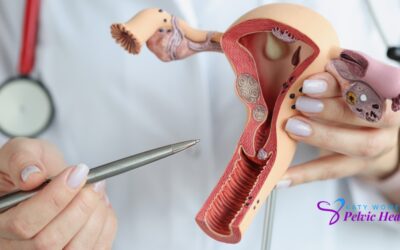Overcoming Urinary Incontinence with Confidence
Imagine this: you’re sharing a laugh with friends, pushing through a challenging workout, or even just sneezing—without a single worry or discomfort. For many women dealing with urinary incontinence (UI), these carefree moments can feel like a distant dream. But here’s the empowering truth: you’re not alone, and you don’t have to settle for less than a life of confidence and ease. With the right guidance, you can navigate the complexities of UI and discover a treasure trove of solutions designed just for you. Let’s dive into this journey together and unlock the freedom you deserve!

Charting the Course: Unveiling the Different Types of UI
Our journey begins with understanding the different types of UI, each with its own unique set of challenges. Here’s our compass to help you identify your path:
The Sneaky Pirate (Stress Incontinence): This sneaky villain attacks during physical activities like a rogue wave, causing leaks when you cough, laugh, or exercise.
The Overactive Siren (Urge Incontinence): A sudden, intense urge to use the restroom becomes your constant companion, with leaks sometimes happening before you even reach the shore.
The Mischievous Duo (Mixed Incontinence): A combination of the sneaky pirate and the overactive siren, keeping you on your toes.
The Overflowing Galleon (Overflow Incontinence): Difficulty emptying your bladder completely, leading to a constant feeling of fullness and occasional dribbling.

Unveiling the Treasure Chest: A Multifaceted Approach to UI
The good news, intrepid explorer, is that there’s no single solution to conquer UI. Instead, we have a treasure chest overflowing with options to personalize your path to success. Let’s delve into some of the most valuable tools:
- The Captain’s Secret Weapon (Pelvic Floor Muscle Exercises): These exercises, also known as Kegels, are like strengthening the rigging of your ship. By targeting the pelvic floor muscles, you can improve bladder control and prevent leaks.
- The Navigator’s Map (Bladder Training): Retrain your bladder to hold its course for longer periods. This involves scheduled bathroom breaks and resisting the urge to rush to the restroom at every tingle.
- The Dietary Compass (Dietary Modifications): Just like a smooth sea calms a ship, certain dietary adjustments can soothe an irritated bladder. Consider limiting caffeine, alcohol, and acidic foods that can worsen urgency.
- The Treasure of Hydration (Fluid Management): Staying hydrated is crucial, but too much fluid can create a storm. Find the perfect balance to keep your body functioning optimally without overwhelming your bladder.
- The Anchor of Weight Management: Excess weight can put extra pressure on your bladder, leading to leaks. Maintaining a healthy weight can significantly improve your UI.
Beyond the Map: Advanced Solutions for Complex Issues
For some adventurers, the treasure chest might hold more specialized tools:
- The Absorbent Life Raft (Absorbent Products): Discreet pads and liners offer additional protection while you navigate your treatment plan.
- The Pelvic Floor Physiotherapist (Pelvic Floor Muscle Therapy): A skilled physical therapist acts as your guide, ensuring you perform Kegels correctly and introducing other techniques to strengthen your pelvic floor.
- The Calming Potion (Medication): Certain medications can relax the bladder muscle or calm overactive bladder contractions, offering additional support.
- The Surgical Intervention (Surgery): In some cases, minimally invasive surgical procedures might be recommended by your doctor to support the bladder or urethra.
Setting Sail with Confidence
With the right knowledge, tools, and expert guidance from Katy Women’s Pelvic Health, specializing in Urogynecology, general gynecology, pediatric & adolescent care, you can navigate the uncharted waters of UI and reclaim your confidence. Our seasoned expert, Dr. Solafa Elshatanoufy, MD, brings over 21 years of experience in the medical field, board certifications in obstetrics and gynecology, female pelvic medicine and reconstructive surgery, and advanced minimally invasive gynecology. With her guidance and a personalized treatment plan, you can address conditions like incontinence, prolapse, fibroids, endometriosis, PCOS, and pelvic pain.
Remember, this journey is about progress, not perfection. There will be stormy days, but with perseverance and the right approach, you’ll find the hidden coves of freedom and live a life brimming with laughter, adventure, and complete peace of mind. So, raise your anchor, unfurl your sails, and embark on this exciting quest for urinary freedom!



